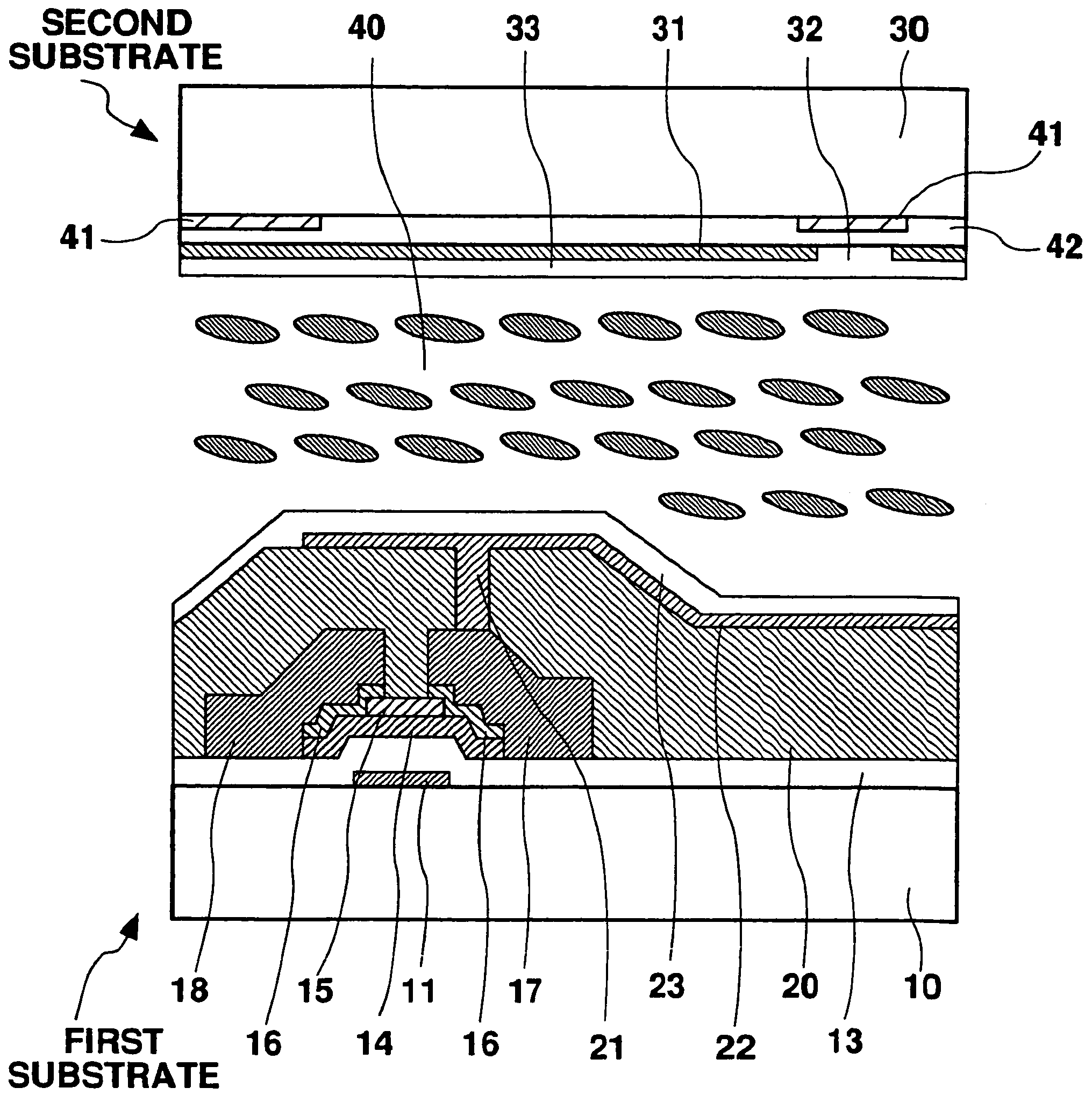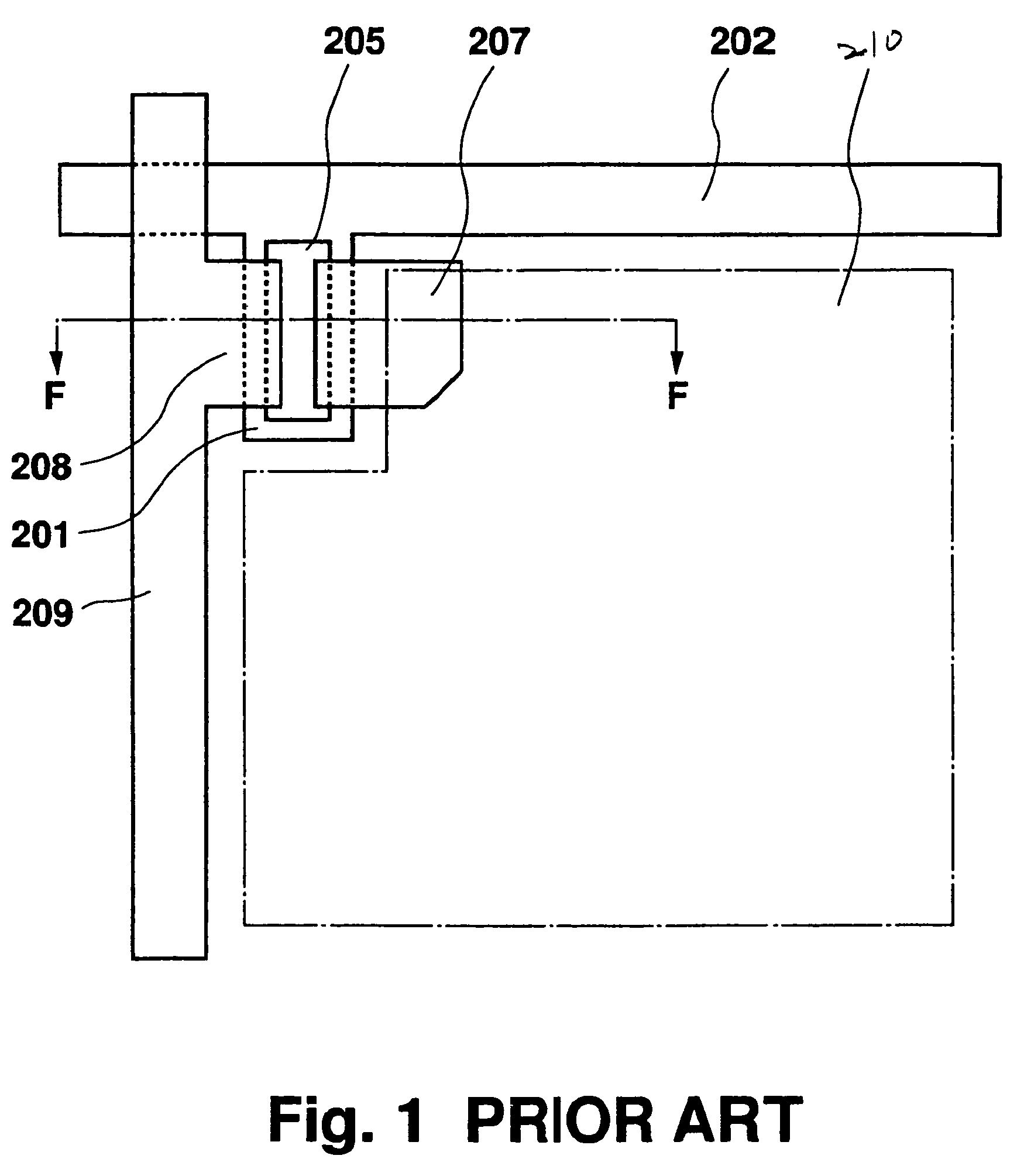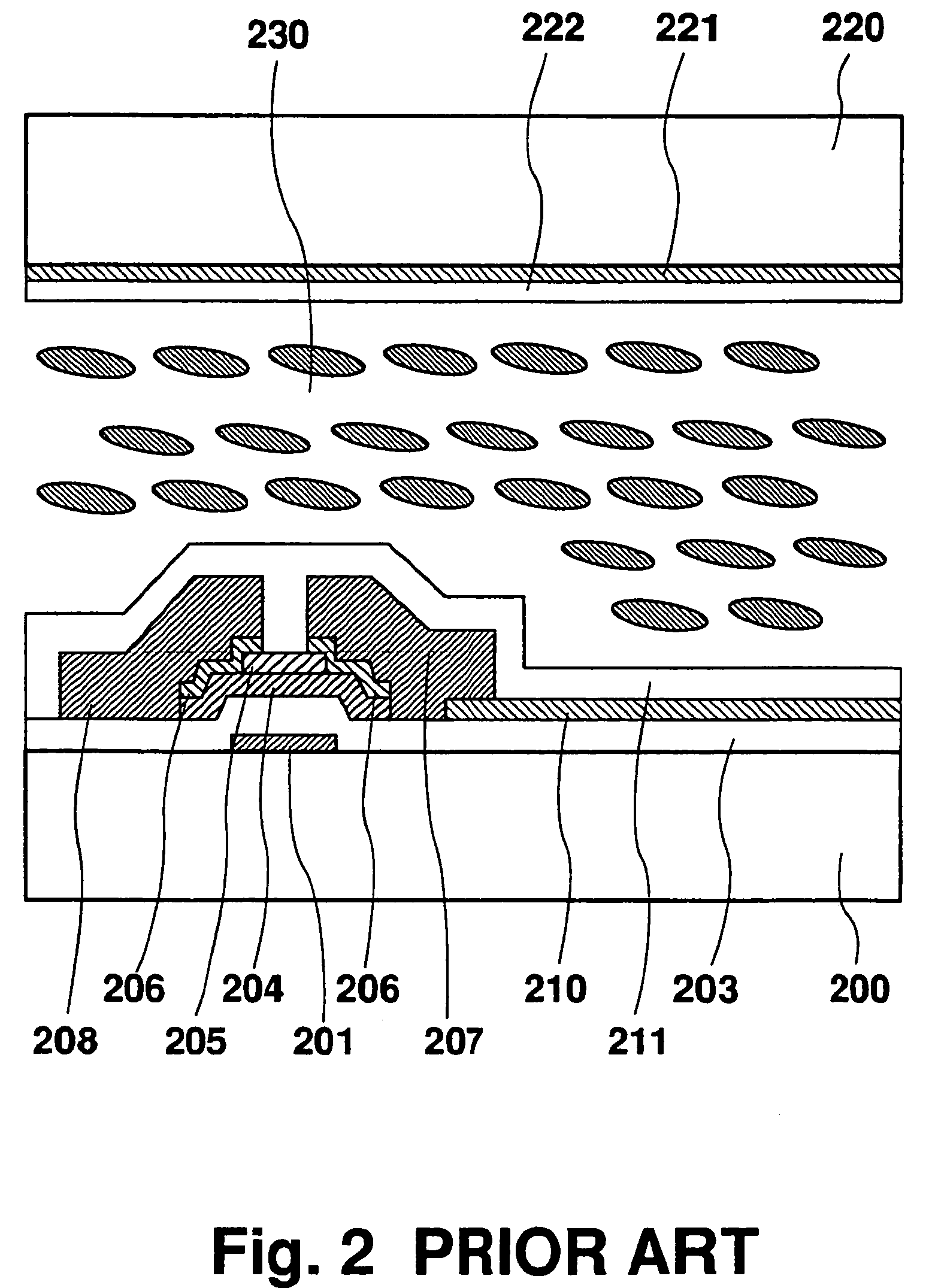Liquid crystal display
a technology of liquid crystal display and liquid crystal, applied in the field of liquid crystal display, can solve the problem of varying the relative retardation amount, and achieve the effect of widening the viewing angl
- Summary
- Abstract
- Description
- Claims
- Application Information
AI Technical Summary
Benefits of technology
Problems solved by technology
Method used
Image
Examples
embodiment 1
[0042]FIGS. 3 and 4 show the structure of a unit pixel for an LCD according to a first embodiment of the present invention. FIG. 3 is a plane view; FIG. 4 is a cross-sectional view along the line A—A in FIG. 3. A transparent substrate 10 made of glass, etc., is provided. On substrate 10, a conductive film made of Cr, etc., is formed in a predetermined shaped to have a thickness of 1500 Å by means of etching using photo-lithography, whereby a gate electrode 11 and a gate line 12 are constituted. A gate line 12 integrally connects a row of gate electrodes 11 aligned in the same row direction. Covering the whole of substrate 10, a Si3N4 or SiO2 layer is formed having a thickness of 2000 Å to 4000 Å by means of CVD to thereby constitute a gate insulation film 13. On gate insulation film 13, an a-Si layer 14 is formed in a region corresponding to gate electrode 11, so that it will act as an operating layer for the TFT. Amorphous Si regions doped with impurities are formed at both ends of...
embodiment 2
[0066]FIGS. 13 and 14 show a structure of a unit pixel for an LCD according to a second preferred embodiment of the present invention. FIG. 13 is a plane view; FIG. 14 is a cross-sectional view along the line B—B in FIG. 13. Electrode arrangement is almost the same as that in the first embodiment. That is, a TFT substrate first substrate comprises a substrate 50, a gate electrode 51, a gate insulation film 53, an a-Si layer 54, an etching stopper 55, an (N+a-Si) layer 56, and a source and drain electrode 57 / 58, which are layered on the substrate 50 in that order; gate and drain electrodes 51, 58 are formed integral to respective gate and drain lines 52, 59; an inter-layer insulation film 60 is formed covering the TFT and associated respective electrode lines; a pixel electrode 62 is formed on inter-layer insulation film 60, connecting to source electrode 57 via a contact hole 61. An opposing substrate (second substrate) comprising glass substrate 70 is provided opposing to the TFT s...
embodiment 3
[0068]FIGS. 16, 17, 18, and 19 show the structure of a unit pixel for an LCD according to a third preferred embodiment of the present invention. FIG. 16 is a plane view and FIGS. 17, 18, and 19 are respective cross-sectional views along the lines C—C, D—D, and E—E in FIG. 16. In this embodiment, on a substrate 100, a drain electrode 101, a source electrode 102, and a drain line 103 all made of a low resistive metal, such as, Cr, Al, Ta, ITO are formed. Drain electrode 101 and drain line 103 are integrally formed. Above these, an a-Si layer 104 and a gate insulation film 105 are formed in this sequence, forming a gate line 107 made of Al, etc. A part of gate line 107 constitutes a gate electrode 106, which is disposed on the drain electrode 101 and source electrode 102. These together constitute a TFT. Covering the TFT and associated electrode lines, an inter-layer insulation film 108 is provided, with a contact hole CT formed throughout. This film 108 is made of material having plan...
PUM
| Property | Measurement | Unit |
|---|---|---|
| thickness | aaaaa | aaaaa |
| thickness | aaaaa | aaaaa |
| dielectric constant | aaaaa | aaaaa |
Abstract
Description
Claims
Application Information
 Login to View More
Login to View More - R&D
- Intellectual Property
- Life Sciences
- Materials
- Tech Scout
- Unparalleled Data Quality
- Higher Quality Content
- 60% Fewer Hallucinations
Browse by: Latest US Patents, China's latest patents, Technical Efficacy Thesaurus, Application Domain, Technology Topic, Popular Technical Reports.
© 2025 PatSnap. All rights reserved.Legal|Privacy policy|Modern Slavery Act Transparency Statement|Sitemap|About US| Contact US: help@patsnap.com



